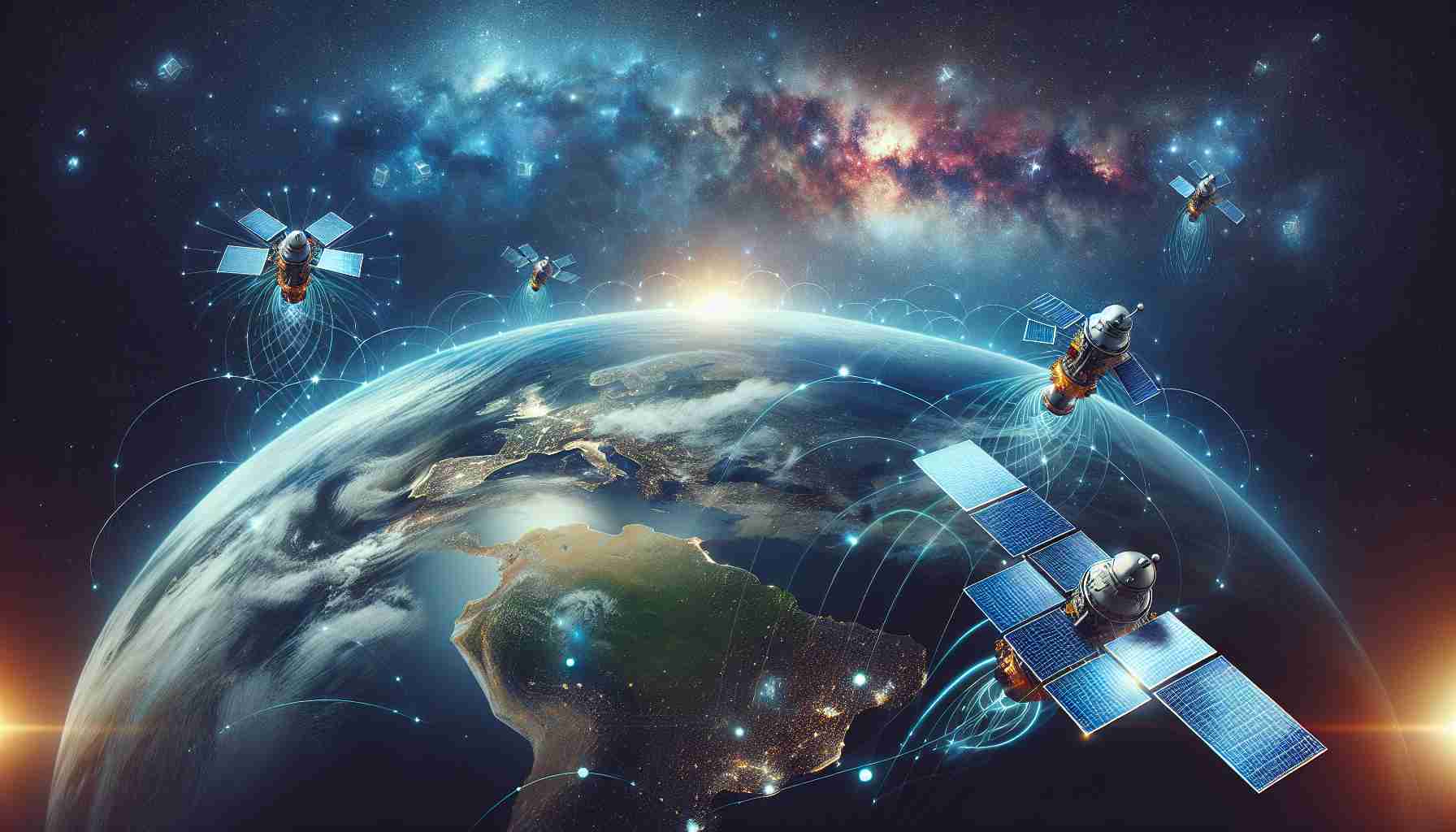The Future of Communication Awaits
SpaceX is poised to transform the way we communicate globally with its upcoming beta test of Direct-to-Cell (DTC) Starlink satellites. This innovative leap allows mobile devices to connect directly to cellular networks from virtually anywhere on the planet, expanding the reach of its already revolutionary internet service.
Since its inception in 2019, Starlink has successfully delivered high-speed internet to approximately 4.6 million users across 118 countries, thanks to its ambitious fleet of nearly 7,000 low-Earth orbit satellites strategically positioned about 550 kilometers above our heads. The introduction of DTC technology is set to enhance connectivity in remote areas devoid of cellular infrastructure, enabling essential services like calls, texts, and data sharing where it’s needed most.
In just days, the beta program will commence, allowing Starlink’s satellites to interface directly with mobile providers, eliminating reliance on traditional systems. This pioneering service could prove invaluable, particularly for those in emergency situations, enabling individuals stranded in isolation to call for help without delay. Moreover, this feature will also assist users in navigating their surroundings, providing access to real-time mapping and location services.
As SpaceX continues to break barriers in satellite communications amidst various global challenges, including ongoing conflicts that impact local internet access, questions regarding regulatory compliance and internet freedom arise. However, with the impending beta launch, the dawn of a new era in worldwide connectivity is on the horizon.
Transforming Global Connectivity
The emergence of SpaceX’s Direct-to-Cell (DTC) technology heralds a profound shift not only in communication but in the fabric of society itself. As this pioneering service unfolds, its potential to democratize access to information could reshape cultural dynamics, particularly in marginalized and underserved populations. The immediate effect is clear: millions who have long been isolated from digital communication due to geographical constraints will gain unprecedented connectivity. This enhancement fosters social inclusion and empowers local economies, enabling entrepreneurs in remote areas to tap into global markets.
From an environmental perspective, the deployment of thousands of satellites may raise concerns about space debris and long-term sustainability in orbit. However, SpaceX is actively addressing these issues by designing satellites with deorbiting capabilities to minimize future orbital clutter. The environmental implications extend to reduced carbon footprints, as enhanced connectivity can lead to more efficient remote work, decreasing the need for commuting and associated emissions.
Looking forward, trends suggest that the integration of DTC technology might lead to further innovations in telehealth, education, and emergency response. The ability to communicate reliably—even in the most challenging circumstances—could catalyze advancements in global health and safety protocols, enhancing disaster response and humanitarian efforts. In the grand scheme, this technological leap signals a shift toward a more interconnected world, with far-reaching implications for governance, commerce, and the very notion of community.
The Next Frontier in Global Connectivity: SpaceX’s Direct-to-Cell Technology
The Future of Global Communication
The advent of SpaceX’s Direct-to-Cell (DTC) Starlink satellites represents a significant breakthrough in global communication. This technology will enable mobile devices to connect directly to satellites, enhancing internet access in regions where traditional cellular networks are sparse or nonexistent. This innovation is expected to disrupt the current telecommunications landscape by providing essential services to millions worldwide.
Key Features of Direct-to-Cell Technology
1. Global Coverage: DTC technology aims to offer expansive coverage across the globe, particularly in rural and underserved areas. This would significantly bridge the digital divide, allowing people to access communication services.
2. Emergency Services: One of the most impactful applications of DTC technology is its ability to provide reliable communication in emergencies. This can be a game-changer for disaster-stricken areas, where conventional networks may fail.
3. Real-time Location Services: The integration of direct communication with satellites will allow users to access real-time mapping and navigation, enhancing safety and convenience.
Pros and Cons of DTC Technology
Pros:
– Improved Connectivity: Provides access to high-speed internet in areas lacking infrastructure.
– Emergency Assistance: Facilitates emergency calls and data services in isolated locations.
– Innovative Applications: Potential for developing new services and applications relying on direct satellite communication.
Cons:
– Regulatory Challenges: Navigating international telecom laws and regulations could slow implementation.
– Dependence on Satellite Health: The efficiency of DTC services may be impacted by the operational condition of satellites.
– Potential High Costs: Initial pricing for users may be high, making it less accessible for economically disadvantaged individuals.
Use Cases of DTC Starlink Technology
– Disaster Recovery: In the aftermath of natural disasters, DTC can provide essential communication services to affected populations.
– Travel and Remote Work: Individuals traveling in remote areas can stay connected with loved ones and their work, reducing isolation.
– Outdoor Adventures: Hikers, campers, and adventurers can utilize DTC for reliable communication, ensuring safety during their expeditions.
Limitations and Challenges
Although the potential for DTC technology is vast, it is not without limitations. Key challenges include:
– Latency: There may be concerns about signal latency due to the distance between satellites and end-users.
– Battery Life: Continuous satellite connectivity could tax the battery life of mobile devices.
– Market Competition: Traditional cellular networks may pose challenges in terms of pricing and user base adaptation.
Trends and Innovations in Satellite Communication
The introduction of technology like DTC Starlink reflects a broader trend toward integrating satellite communications with everyday mobile services. As more companies aim to deploy similar solutions, we can expect:
– Increased Investment: A surge in investment towards satellite technology will drive innovation and lower costs over time.
– Global Partnerships: Collaborations between SpaceX and local telecom operators could facilitate smoother regulatory adoption.
Insights and Predictions
The DTC technology is projected to rapidly evolve the landscape of global communication, yielding significant implications for connectivity, emergency response, and technology development. Analysts predict that if successful, this could inspire more companies to innovate, ultimately enhancing internet freedom and access across the globe.
Conclusion
The upcoming beta test of SpaceX’s Direct-to-Cell Starlink satellites heralds a transformative moment in communication technology. With its promise of improved connectivity, especially in remote areas, DTC serves as a beacon of hope for millions looking for reliable communication solutions. As SpaceX looks to redefine communication strategies worldwide, the anticipation surrounding the beta launch underscores the growing significance of satellite technologies in our increasingly interconnected world.
For more information about the future of communication, visit SpaceX.



















